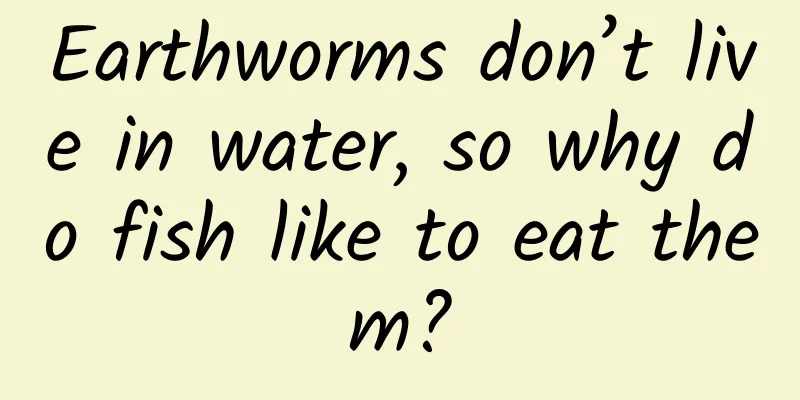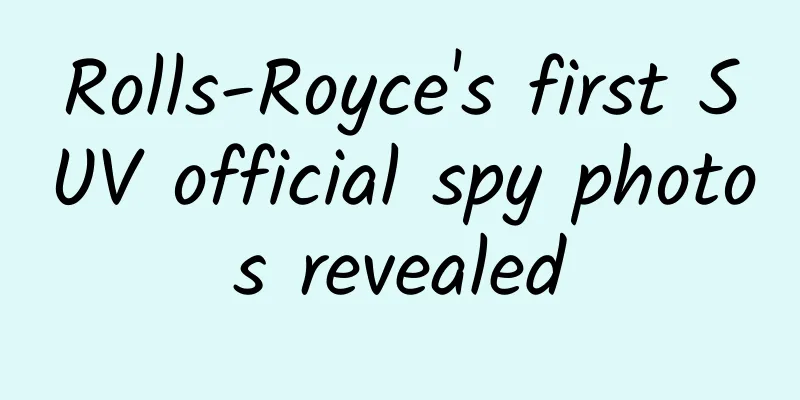New media operation skills: clarify the operation positioning!

|
Before operating new media , it is necessary to clearly define the positioning so that subsequent work can be carried out and the expected results can be achieved. The author uses a small case to illustrate the role of positioning and analyze how to conduct operational positioning. Before operating new media, the first thing we need to do is to have an accurate positioning, so that we will have some plans in mind when operating. I believe that many operators will be troubled by one problem, that is, why the number of clicks and readings is always unstable. In fact, the reason is very simple, because we do not position the accounts we operate well, and do not understand what users need. We just push some content every day and push the content we decide. Such operators have no "empathy". To solve this problem, we must do a good job of positioning in the early stages. Now I will use a small case to tell you how to do a good job of positioning. CaseI don’t know if you have seen Pechoin’s one-shot long-form advertisement. Last year, Pechoin’s long-form advertisement “1931” was widely circulated on WeChat Moments. This year, Pechoin launched a long-image advertisement, and this tweet has been read over 100,000 times. It is popular every time, not by coincidence, but because Pechoin has a clear positioning and fully utilizes its creativity. In this long-form advertisement, Pechoin continued its usual Chinese style and creatively combined it with the most popular culture of the moment to create a new interpretation. There are four reasons why Pechoin's long-form advertisement is so popular with the audience. Firstly , palace dramas have been very popular recently, and Pechoin’s target audience is concentrated on young women aged 18 to 35, so the palace style was adopted, which is in line with the trend and in line with the audience’s taste. Secondly , the story begins with a mystery about how several concubines in the harem aged overnight, which arouses the curiosity of the audience and makes them want to find out the truth. Again , the product "Pechoin x Palace Limited Edition Fangsheng Gift Box" is used as the key clue to carry on the plot, to introduce the product highlight of "going against time". At the same time, many exquisite objects from the Chinese court are inserted into the long-form advertisement, including the inspiration for the "Fang Sheng Gift Box", the protagonist of this long-form advertisement. Finally , with the rise of rap culture, rap songs are increasingly used in brand advertisements. Pechoin also launched a rap advertising song this time, singing its own unique style. In the MV of the advertising song, from the display of traditional oriental cultural elements such as lion dance, shadow play, Peking opera, embroidery, and Hanfu, to the plot of the struggle between beauties in the harem, to the contrast between the modern urban skyscrapers and the Forbidden City in Beijing, all of them fully interpret the oriental beauty that does not fade with the passage of time. At the same time, the lyrics of the advertising song echo the theme of oriental beauty of this marketing campaign, showing Pechoin’s brand perspective this time: showing the ultimate oriental beauty, resisting time, and retaining women’s beautiful faces. From this case, we can see that riding on the popularity of palace dramas, Pechoin has applied unique oriental palace elements to its marketing activities, showing the charm of the collision between domestic products and current trends. As a shining light for domestic brands, Pechoin’s marketing campaign is based on the theme of oriental beauty, which can better evoke a sense of national identity and pride. The combination of oriental aesthetics and popular culture is more in line with the psychology of modern young women. In fact, long-picture marketing is not effective just by doing it. Often for implanted products, consumers are more interested in the storyline of the long picture. In fact, the conversion rate brought to the brand is very low, and it only has the effect of exposing the brand products. Therefore, in content marketing, long images are actually used more as an auxiliary role, and diversified and innovative marketing methods are the operational positioning that brands should master. Positioning of new media operationsSo how should we position ourselves in terms of operations? Let me first briefly introduce to you what operational positioning is. Operational PositioningPositioning refers to determining the position of something in a certain environment. Positioning also refers to determining the direction, place and boundaries. Positioning starts with a product, which can be a commodity, a service, an organization or even a person. Therefore, whether it is an enterprise or an individual, once there is a problem with positioning, your subsequent operational work will be completely off track. The concept of positioning cannot be underestimated. In 1972, Al Ries and Jack Trout proposed the positioning theory, which created a new marketing thinking and concept and was rated as "the most influential idea in American marketing in history." The theory holds that companies must create a "positioning" in the minds of potential customers, which takes into account not only the strengths and weaknesses of the company itself, but also the strengths and weaknesses of its competitors. Before operating new media, there must be a basic positioning. The clearer the positioning, the more effective it is. Therefore, it is necessary to clarify the positioning of new media operations, then figure out who the users are and the corresponding solutions for the products, and finally start to do it. Only by doing this, the content or activities will achieve twice the result with half the effort. In the new media operation process, positioning is like laying the foundation. Don’t do it blindly before thinking it through. Get to the heart of the matter, focus on what part of this area you can contribute to, then start practicing, breaking it down as deeply as possible, and then spreading it. The positioning of new media operations also mainly includes four key points, namely the key points of positioning, the targeted user groups, what services to provide, and which platforms to choose. Next, I will explain the four key elements one by one. 1. Key points of positioningThe key points of positioning are very important. User groups, services provided, and platforms are all determined by positioning. The key points of positioning can be divided into two categories:
2. Targeted user groupsSpeaking of user groups, it is also the most important link in positioning. The choice of user groups also directly depends on how you use them in the later stage. Only when we understand the user groups we are targeting in the early stage and give these groups some of the information they want in the operation, can we achieve recognition in the later stage. In this part, the most important thing for operations personnel to pay attention to is that you must always be clear about who your target users are and the characteristics of these people. Now that we are here, let me explain to you how to locate the target users.
The selection and classification of user groups is the most important factor in positioning, so everyone must be careful and patient. 3. ServicesEarlier we classified and confirmed the groups, so after confirming the groups we need to determine which platforms we can use to provide corresponding service content to users. Each of our industries has its own characteristics, and we must design reasonable content based on the characteristics of our own industry. So before designing, we must also do a careful research on our own industry and products, and understand our own products at least 200%, so that we can design and provide services based on the characteristics of our industry. 4. PlatformThe positioning of the platform is very important. All self-media platforms display their content in three forms: text, video and pictures. Before we start positioning, we need to first determine the form in which the content will be presented: voice, text, pictures, or videos? Only when the form is determined can the content be positioned. In fact, the current common forms of content presentation are still text and pictures, while the usage rate of cool videos and voice messages with useful content is still relatively low. Therefore, we might as well use them reasonably according to the characteristics of our own official accounts. The pitfalls of new media positioningThere is no way to avoid the positioning pitfalls in new media operations. What we operators have to do is to learn how to overcome the positioning pitfalls. We all know that as long as we understand the positioning skills and use positioning to clarify the goals and directions of various tasks, our work results will be more targeted. However, when we do not have an accurate grasp of positioning, we will fall into a vicious circle of positioning and be unable to extricate ourselves from the swamp of concepts. Today, I will tell you how to overcome the positioning pitfalls. marketingThere is a book called "Positioning: The Biggest Idea in American Marketing Ever". As the title suggests, the word positioning comes from marketing, and its purpose is to make the brand stand out in the minds of some potential customers. We are based on several logics:
User portraits are a double-edged swordFirst: The real positioner of a product is user-centric. Meeting user needs is certainly something that every product designer is happy to do, but for some companies, perhaps due to market environment, financial pressure, etc., not every product design can simply meet user needs. Moreover, if you pursue users too much and go to extremes, although there are great opportunities, there are also risks. If you are not careful, your business will not be outstanding and you will become unpopular in front of users, and your feelings will become empty. Therefore, operators need to be clear about the true positioning of the product. Second, the product positioner does not position the product. Whether it is the product form (product positioning) that the boss has already defined, or the group of people that the boss has already circled (user positioning). The true positioner must be clear, especially for those who are in operations. It is easy to "empathize" and become a positioning decision maker, and end up stealing the boss's job. “If positioning is no longer my business, is user portrait still meaningful?” The positioning described above is mostly from the perspective of product design. As for operations, we know that all work revolves around users. User portraits are actually the concrete continuation of user positioning and also the support for operations work. Is positioning a verb or a noun?For the boss mentioned earlier, positioning is a noun, a definite position; but for us in operation, positioning is a verb, we have to determine this position. This statement is a bit abstract. To put it simply, operators need to understand the market industry and the positioning of competitors and know how to differentiate themselves. I will briefly tell you the three "passes" and four "abilities": By understanding the market industry, we can get the ranking of products and grade them according to dimensions such as the number of active users. By listing the corresponding industry leaders, competitors in front of the echelon, and potential competitors in the back, and through their respective positioning, we can find differentiated spaces, communicate with the real positioning decision makers, get a consensus on operations, endorse this space, and concentrate company resources to create this space. Remember: positioning is just a process of understanding, and the most important thing is to reach an operational consensus. Decision makers will have more or less an answer to the question of positioning in their minds, but being a passive operator is definitely not what they want. At the same time, you are the best portrait. Here we need to introduce a concept - long-term integration must be subdivided. Integration means that the required skills become comprehensive, but segmentation requires segmentation of skill sections and vertical fields. So, how do user portraits work? It is important to maintain the idea of granular refinement. For example, during your operations, can you refine the core users with the highest interaction - their age can be accurate to within 5 years, their city can be more specific, with accents, etc. After accumulating experience for a period of time, when the operation is effective, we will reach a consensus with the positioning decision makers and propose the development of tools to assist the operation. In this way, the stupid method becomes an operational advantage over others. It is also a development and operation tool, but you are more familiar with its process. As for the expansion of operations from this to that, there is a saying that goes, if you want to move others, you must first move yourself. For example, if I am organizing an event, the people I know best are definitely those born in 1996, Aries, and girls. Although the dimensions are small, the design cycle of my event can be very short, and I can change to a different zodiac sign next month. Fear of positioningFinally, let me answer the question I asked at the beginning, "How can we overcome the positioning pitfall?" If you are not clear about the role of operational positioning, then you are digging a big hole for yourself. First point: Product positioning and user positioning are determined by the real positioner. Operators can do the same thing and reach a consensus on operations, turning it into proactive operations. The second point: User portraits should pursue granularity, that is, refined operations. Whether it is your own efforts or splitting it based on your own granularity, it can promote meticulous operational behavior. If the initial product positioning is sharpening the knife, tell you what you can do. Secondly, user positioning is picking out what to do and telling you what not to do. Finally, content positioning is the real slaughterhouse, which will tell you in detail how to do it. So, can you avoid the big pitfall of positioning in the end? Author: Spider Official account: Spider (ID: sangdi890129) |
<<: 5 strategic thinking to build a brand with lasting competitiveness
Recommend
Are you using the 6 types of keywords that you must promote when doing marketing?
There are 6 common types of keywords : brand word...
What is the difference between pavilions and towers? Remember it in 30 seconds and become a top student when traveling!
What is the difference between pavilion, platform...
Can India become an exciting battlefield for Apple's "PUBG"?
Earlier this month, Apple launched its largest fr...
What kinds of data are mainly analyzed for SEM optimization? How do novice SEM users perform data analysis?
SEM is the abbreviation of Search Engine Marketin...
iOS 7 exposed the latest vulnerability, unlocking in as fast as 5 seconds
Some users have discovered the latest lock screen ...
Getting Started Guide to Mutual Finance Operations: How to Build Your Operational Framework
This article mainly talks about the operation fra...
Aston Martin: Sales in China to plummet 49% in 2024
Recently, it was reported that, against the backdr...
The era of general artificial intelligence technology has arrived. His research results, like the "spark" in "Transformers", give life to machines.
Publisher of this issue: Chen Junbo, founder and ...
Xingning SEO Training: How important is Internet marketing to a business? Is SEO effective?
Nowadays, website optimization has long been indi...
New ways to operate e-commerce on Double Eleven 2019!
Recently, many of my friends in the product field...
Kuaishou short video product analysis!
Short videos have become a part of our daily live...
33 data points on Apple in 2014
[[125219]] The technology industry continued to c...
6 tips for attracting new customers in 2020!
During the epidemic, affected by the epidemic, ma...
April Fools' Day poster collection: Baidu and Tencent show off their black technology
April is probably the most ridiculous month. You ...









